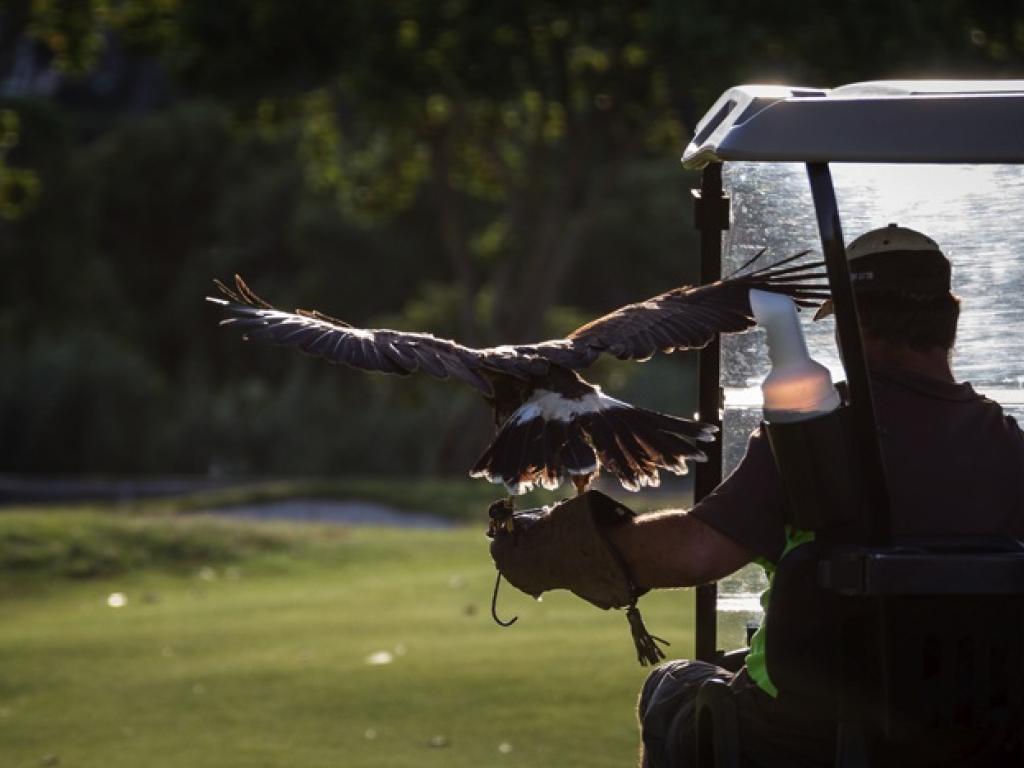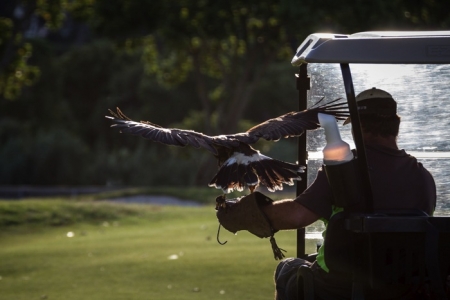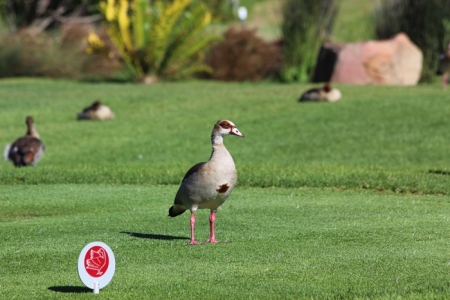Wild goose chased around golf course


Who’d be a goose? Photo John Dickens.
Harris’s hawks were unleashed from a golf cart and aimed at groups of the big geese, which, unlike many species, are thriving in the changing Western Cape environment. The geese began to associate golf carts with the fear of being harassed by hawks and over time, the abundance of the “problem” bird on golf courses decreased by 73%.
The study was conducted by Alex Atkins, Dr Rob Little, Dr Arjun Amar (all of UCT’s Fitzpatrick Institute of African Ornithology) and Professor Stephen Redpath of the University of Aberdeen.
While a minimal number of geese were killed during the study to minimise habituation to the hawks, the researchers are confident that since the majority of geese left the property, this indicates that the falconry did scare geese away from the test sites.
The researchers call it manipulating the landscape of fear.
Fear and vigilance
The fear-inducing landscape was Rondebosch golf course, where they tested how effective falconry would be. Rondebosch is close to the Black River and the Raapenberg bird sanctuary, which both offer habitats for Egyptian geese.
Steenberg and Westlake golf courses were used as control sites – no falconry was used there, so that the team could compare the abundance of geese in all three locations.
When the Harris’s hawks were flown at the geese by registered falconers from Raptor Force, the geese grew more vigilant. The hawk handlers and researchers employed a number of strategies to ensure the geese never grew accustomed to the threat, including releasing the hawks from different distances and along every part of the course.

They can’t yell “fore!”, but the Egyptian geese on the golf course learned to keep a beady eye out for predators.Photo Richard Gie.
For a time after the falconry was stopped, the geese remained unusually vigilant when golf carts were around. The results showed that geese became conditioned to fear golf carts as a warning of increased predator risk, the study argued.
“As far as we are aware, this is the first study to demonstrate changes in anti-predator behaviour in a target species as a result of falconry,” they wrote.
“Our results demonstrate the efficacy of falconry to reduce nuisance bird abundance and suggest there may be other applications where the deployment of trained predators can be used to mitigate negative human-wildlife interactions,” they wrote in the paper’s abstract.
While the study showed that trained birds of prey can be useful to mitigate human-wildlife interactions, the fear factor would need to be constantly reinforced for the full benefits of this relatively non-lethal method of “nuisance” control to be realised.
Story Yusuf Omar.
